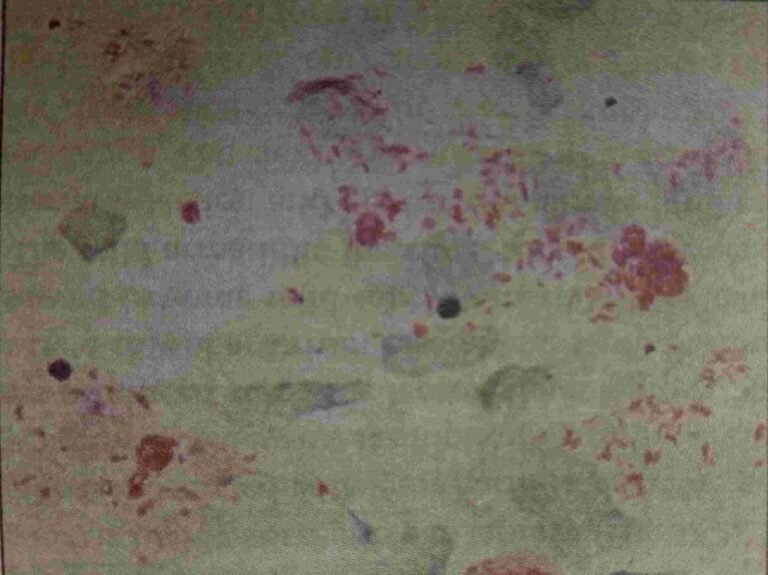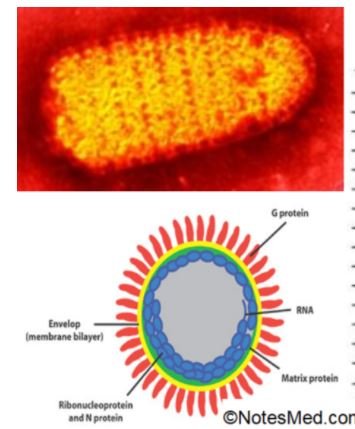Introduction of Neisseria gonorrhoea
Neisseria gonorrhoea (Gonococcus) causes ‘gonorrhoea’, a sexually transmitted infection (STI), and commonly manifests as cervicitis, urethritis, and conjunctivitis.
Morphology
Neisseria gonorrhoea is a non-capsulated, gram-negative intracellular kidney-shaped diplococci. It is a non-sporulating & non-motile species that is oxidative positive.
Virulence factors of Neisseria gonorrhoea:
- Pili or fimbriae (hair-like structures): These help in adhesion to the host cells and prevent bacteria from phagocytosis. Pili are composed of antigenically distinct pilin proteins, undergo antigenically, and phase variation dial helps in the typing of gonococci.
- Outer membrane proteins:
Porin (protein I): forms transmembrane channels (pores) which help exchange molecules across the gonococcal surface. There are two major serotypes-PorB. IA and PorB. IB.
- PorB. IA strains are associated with both local and disseminated gonococcal infections (DGI).
- PorB. IB strains usually cause local genital infections only.
Opacity-associated protein (Protein II): Helps in adhesion to neutrophils and other gonococci, and is also responsible for the opaque nature of gonococcal colonies.
- Transferrin-binding and lactoferrin-binding proteins: Helps in the uptake of iron from transferrin and lactoferrin.
- lgA l protease: protects the organism from the action of mucosal IgA antibody.
- Lipo-oligosaccharide (LOS): Endotoxicity activity.
Resistance:
- Readily killed by heat, drying, and antiseptics.
- Dies in 1-2 hours outside of the body.
- Contains cryptic plasmids.
- Chromosomally-mediated changes in cellular permeability inhibit entry of penicillin, tetracycline, erythromycin, and aminoglycosides.
Typing of gonococci:
- Serotyping: it is based on protein-I (porin). Up to 24 protein-IA and 32 protein-lB have been identified.
- Auxotyping: It is based on the nutritional requirements of each strain, e.g. AHU auxotype needs arginine, hypoxanthine, and uracil as growth factors.
Clinical manifestations of Neisseria gonorrhoea:
Gonorrhea is a venereal disease.
In males: Acute urethritis is most common. It is characterized by a purulent urethral discharge which is a ‘flow of seed’ resembling semen. 1st explained by Galen 130 AD. Incubation period: 2-7 days.
Complications: epididymitis, prostatitis, oedema of the penis, seminal vesiculitis, and balanitis.
Infection may spread to periurethral tissues causing abscesses with sinus formation (water-can perineum).
In females: less severe in females, with more asymptomatic carriage than males.
- Mucopurulent cervicitis: most common.
- Vulvovaginitis: Not seen in adult females as the adult vagina is resistant to gonococcal infection (due to its low pH and thick stratified squamous epithelium). Gonococcal vaginitis can occur in prepubertal girls and post-menopausal women where the vagina is lined by thinned-out mucosa with higher pH.
Spread to Bartholin’s gland, endometrium, and fallopian tube. Salpingitis and pelvic inflammatory disease(PID) may lead to sterility in humans. Fitz-Hugh-Curtis syndrome: Rare complication, characterized by peritonitis and associated perihepatic inflammation.
In both male and female:
- Anorectal gonorrhoea (spread by anal sex): more common in females.
- Pharyngeal gonorrhoea (spread by orogenital sex).
- Ocular gonorrhoea.
- Urethritis.
- Proctitis.
- Disseminated gonococcal infection.
In pregnant women: Causes prolonged rupture of the membranes, premature delivery, chorioamnionitis, and sepsis in the infant.
In neonates (Ophthalmia neonatorum): It is characterized by purulent eye discharge, and occurs within 2-5 days of birth. Transmission occurs in the course of birth from colonized maternal genital flora.
Disseminated gonococcal infection (DGI): It is characterized by polyarthritis and rarely dermatitis and endocarditis. Most commonly associated with PorB.1A serotypes which are also characterized as AHU auxotypes.
Gonococcal cervicitis:
- Incubation 3-10 days.
- Symptoms:
- Vaginal discharge.
- Dysuria.
- Vagina bleeding.
- Cervical signs:
- Erythema.
- Friability.
- Purulent exudate.
Pelvic Inflammatory disease (PDI):
- Structure: Lower abdominal pain.
- Signs: CMT, Uterine/adnexal tenderness, +/- fever.
- Laparoscopy may show hydrosalpinx, inflammation, abscess, and adhesions.
- PID is often silent.
Bartholin’s abscess:
- Painful swollen Bartholin’s glands.
- Fluctuant, tender.
- May have expressible purulent discharge.
Gonococcal infections in men:
- Urethritis.
- Epididymitis.
- Proctitis.
- Conjunctivitis.
- Abscess of Cowper’s/Tyson’s glands.
- Seminal vesiculitis.
- Prostatitis.
- Pharyngitis.
- DGI.
- Urethral stricture.
- Penile oedema.
- Many infections are asymptomatic.
Gonococcal urethritis:
- Incubation period 2-7 days.
- Abrupt onset of severe dysuria.
- Purulent urethral discharge.
- Most urethral infections are symptomatic.
Epididymitis:
- Swollen painful epididymis.
- Urethritis.
- Epididymal tenderness or mass on an exam.
Epidemiology:
In developing countries, and may play a role in enhancing or intensifying transmission of HIV. 62 million cases of gonorrhoea worldwide each year.
Host: Human disease, there is no animal reservoir.
Source: the only source of infection is asymptomatic female carriers or less often a patient.
Transmission:
a)Sexual contact (venereal). b)From mother to baby during birth.
Risk factors for GC infection:
- Urban and low SES populations.
- Adolescent > age 20-25 years >older.
- Black/ Hispanic > white.
- Multiplex sex partners.
- Inconsistent use of barrier methods.
- High prevalence in the sexual network.
Laboratory Diagnosis of Neisseria gonorrheal disease:
Specimen Collection:
- Urethra swab in men and cervical swab in women.
- A vaginal swab is not satisfactory.
- Urine.
Process:
The urethral meatus is cleaned or unstained with gauze soaked in saline. The purulent discharge is expressed by pressing at the base of the penis and collected directly onto slides or swabs.
- Dacron or rayon swabs (Preferred): cotton and alginate swabs are inhibitory to gonococci.
- In chronic urethritis: As discharge is minimal or least, prostatic massage is done to collect or assemble the secretion; alternatively, the morning drop of secretion may be collected or assembled.
Transport media:
- Immediately.
- If not possible, then it should be collected or assembled in charcoal-coated swabs kept in Stuart’s transport medium or Charcoal-containing medium (Amies medium) can be used.
- Other commercial transport devices such as JEMBEC or Gono-pak systems are available.
Microscopy:
- Gram staining: gram-negative intracellular kidney-shaped diplococci.
- Gram staining; is highly specific & more sensitive in symptomatic men.
- In females, it is only 50% sensitive due to the presence of commensal Neisseria species that may confound with interpretation.
- Culture is recommended for the diagnosis of gonorrhoea in women.

Culture:
- Fastidious, aerobic, facultatively anaerobic.
- Endocervical culture has a sensitivity of 80- 90%.
- Cervical swabs coma in normal Flora. hence, selective media are preferred, such as:
- Thayer Martin medium: Colonies are large or enlarged 1.5- 2.5 mm, grey, convex, with crenated margin and raised opaque centre.
- Modified New York City medium
- Martin-Lewis medium: §lnoculated media are incubated at pH 7.2-7.6 at 35-37°C for 24- 48 hours. Blood and synovial fluid cultures should be done in suspected cases of DGl on enriched media, such as lysed blood agar (by saponin) and chocolate agar.
Biochemical Tests:
- Oxidase and catalase-positive.
- Ferments only glucose but not maltose and sucrose.
- Rapid carbohydrate utilization tests.
- Indole negative.
- H2S negative.
Serological test:
- Complement fixation test.
- Passive agglutination test.
- RIA.
- Molecular methods: PCR
Treatments
- Penicillin.
- Third-generation cephalosporins for uncomplicated gonococcal infection. Both sexual partners should be treated.
- Ceftriaxone (125 mg given IM, single dose)
- Cefixime (400 mg given orally, single dose)
- Ciprofloxacin /ofloxacin 500 mg single oral dose
- Ceftriaxone 125 mg 1/m single dose with 1 gm azithromycin single dose and doxycycline 100 mg × 2-7 days.
Prophylaxis
No vaccination was available for gonococci.
- Early detection of cases.
- Treatment of both partners.
- Tracing of contacts.
- Health education about safe sex practices, such as the use of condoms



